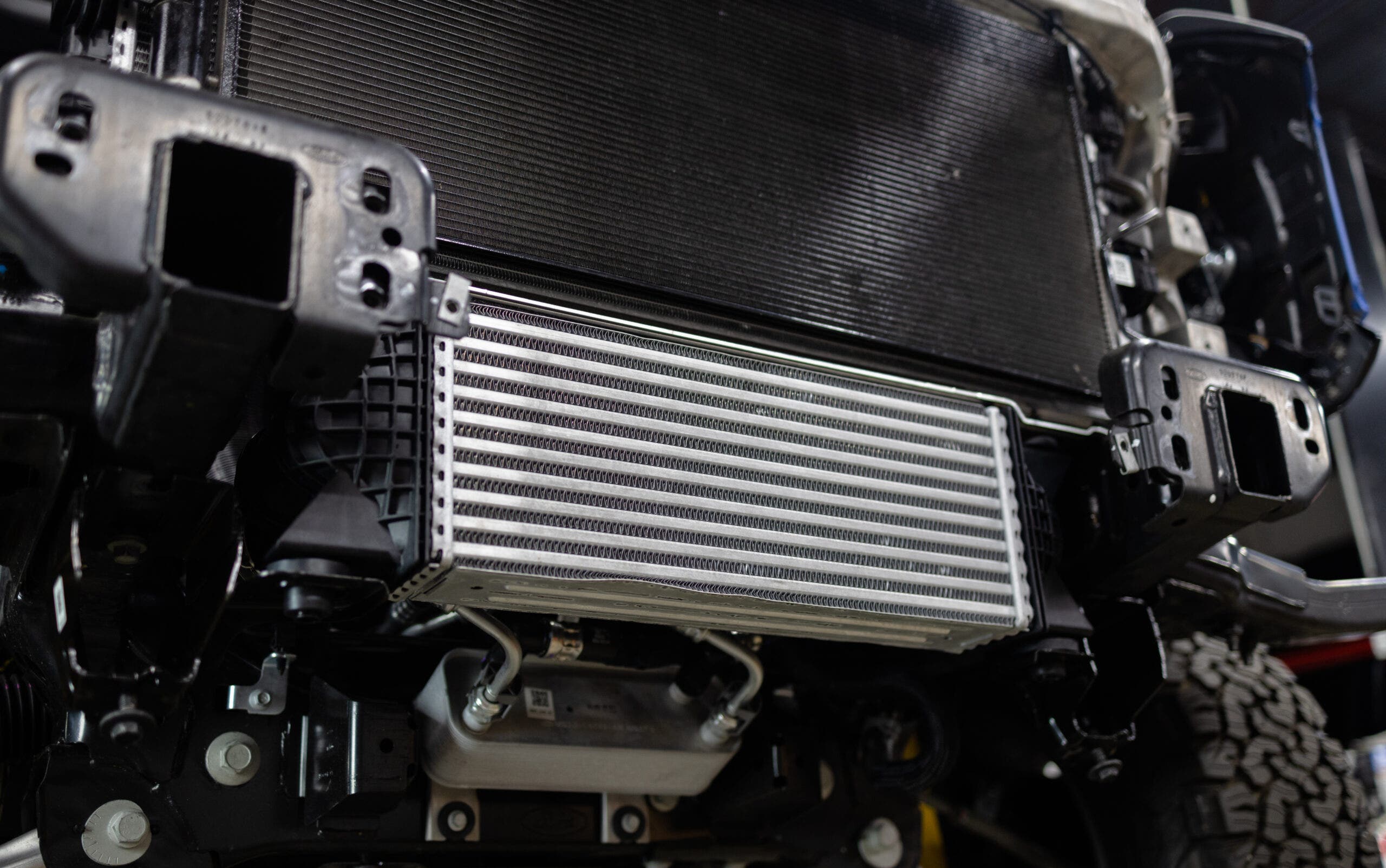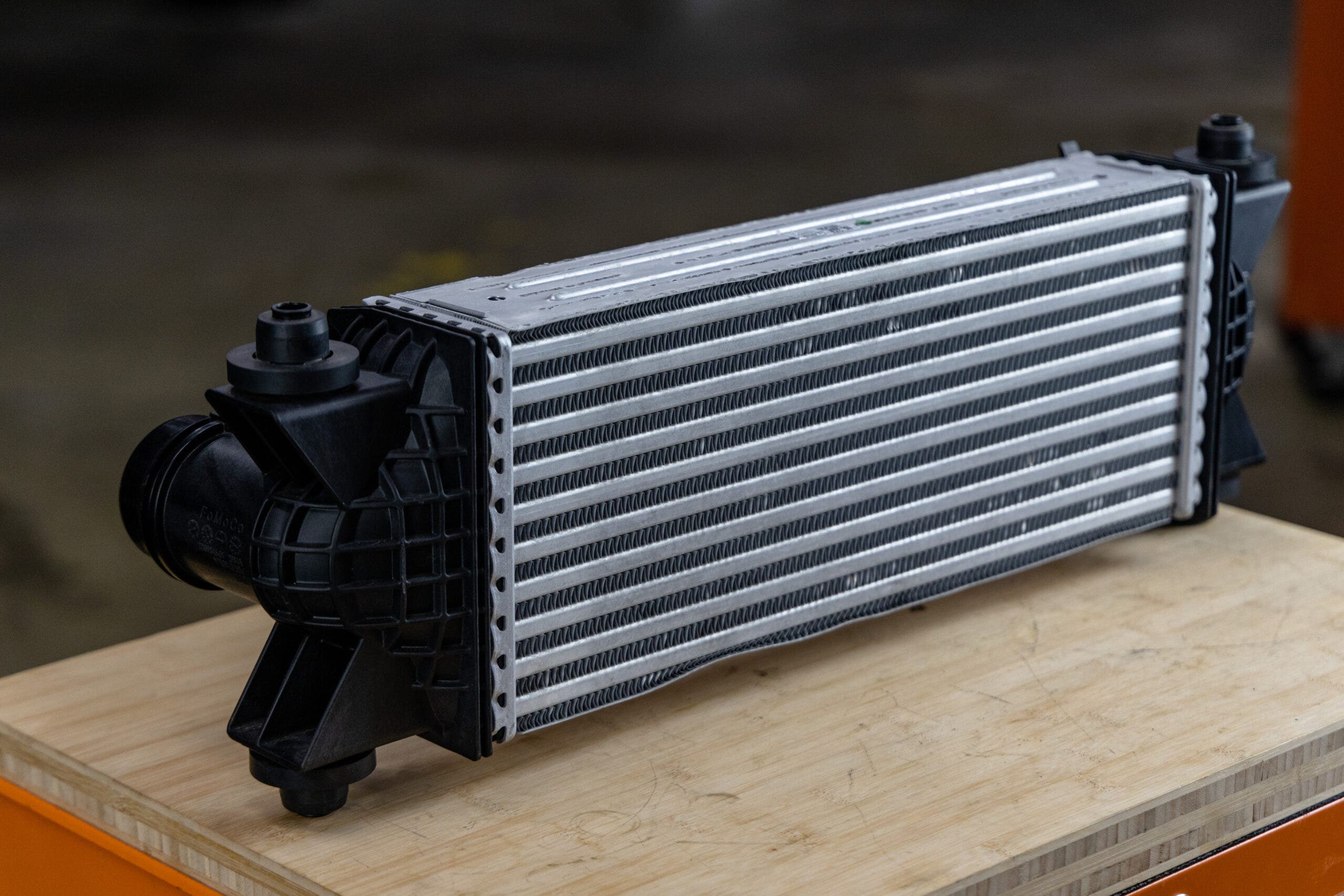
Low Road - 2021+ Ford Bronco 2.3L/2.7L Performance Stock Location Intercooler R&D, Part 1 - Stock Review and Design Plans
Our Bronco Performance Stock Location Intercooler is now available! Click Here to grab yours today!
Nothing brings the comfort of your typical daily driver to the wilderness, quite like the latest Ford Bronco. During its hiatus, Ford had plenty of time to research and implement the comprehensive range of improvements to their Jeep-fighter to dethrone the reigning off-road champ. Ford designed its sixth-generation Bronco to be the off-roader for everyone. Still, not everyone behind the wheel of the Bronco is seeking the dirt at the end of the pavement. Some would rather stuff more wild horses under the hood rather than load the truck down with the entire off-road accessory catalog. Maybe it's a combination of both, and you just need some more power to tote around that gear. In either case, Ford locked away plenty of power potential in all of their EcoBoost power plants, with the intercooler holding the key.
To understand why your intercooler is one of the gatekeepers of power for your Bronco, we have to dig a little bit back into the basics of forced induction. The general concept is that the turbo or supercharger under the hood forces more air into the cylinders to provide an improved fuel-air mixture for better combustion. Simply put, the formula works out to More Air+More Fuel=More Power, with the turbo supplying the air part of that equation. The trouble is that the act of compressing that intake air, or making boost, heats this air, which is not ideal for performance. Hot air is harder to compress into the cylinders, not to mention the reduced engine output due to pulled timing and a worse air-fuel mixture.
This is where the intercooler comes into play. These particular platforms use an air-to-air intercooler, which is mounted between the throttle body and turbo and utilizes the ambient air to dissipate heat in the charged air system. For a deeper look into the methods of intercooling, make sure that you head over to our technical article:
A Tale of Two Systems - Intercooling System Overview - Air-to-Water vs. Air-to-Air Intercoolers

When it comes to the Bronco specifically, there are a few aspects about the intercooler's design that lock away power potential in both of these EcoBoost engines. First, Ford opted to use the same intercooler between the 2.3L single-turbo four-cylinder and the 2.7L twin-turbo six-cylinder for starters. It's not uncommon for manufacturers to reuse components across their fleet to cut costs, but that comes with some compromises since a properly sized intercooler is vital for best performance. Oversizing the intercooler core can lead to increased turbo lag and slower response from the vehicle. Whereas an undersized core, especially when it's cooling for two turbos, will soak with heat much quicker, returning high intake air temperatures and diminished performance. For the most part, this intercooler provides adequate cooling suitable for both engines during daily commuting duties but will quickly fall behind once more is demanded from the system.


The other aspect of the OEM intercooler holding your Bronco back is the unit's construction. From the factory, these intercoolers are built using a lightweight tube-and-fin core with a pair of plastic end tanks crimped to either end. Again, this construction is ideal for low-cost mass production and is suitable for most driving situations, but it is still easily overwhelmed by increased boost, heavy loads, or low speeds and will quickly soak with heat.

Plastic is an ideal material choice for large-scale production, but it comes with some drawbacks, much like the rest of the Bronco's intercooler setup. For starters, these end tanks are only crimped to the core, which is the main culprit for boost leaks as the component ages or more boost is crammed into the system. Also, these plastic pieces are prone to degradation and more susceptible to damage from debris, both on and off the road. For a vehicle designed for the rugged outdoors, this intercooler becomes a liability in both performance and durability. Luckily, we're already on the case.


Since we're retaining the same mounting location for this intercooler, we have performance first on our mind, and performance starts in the core. So, to beef up the cooling power for both Broncos, we plan to bulk up the core's thickness for an increased core volume and improved cooling power. Increasing the size of this intercooler might seem counterintuitive to an intercooler shared between two different engines. Still, the larger core volume is best for use with higher boost pressures resulting from tunes or bigger turbos, so this design is the ideal choice for those looking to squeeze more power from either EcoBoost.
To further the effectiveness of our planned core's size, we're also opting to swap out the tube-and-fin construction with a much more robust bar-and-plate design. This style of core construction is both less susceptible to heat soak and much stronger than its tube-and-fin counterpart.
Of course, no new core would be complete without a matching set of equally impressive end tanks, with this intercooler being no exception. We're plotting on a set of cast aluminum units that are optimized for flow to and from the core. These tanks will also be Tig-welded to the core to eliminate any chance of boost leaks.

The Bronco can be spec'd out for any adventure you're planning. Whether you're heading to work or a remote trailhead, the Bronco has it all. Well, it almost has it all. Like any other motorized vehicle out there, adding more power is always on us enthusiasts' minds, with the intercooler being an essential step in that process. So make sure that you keep your eyes peeled for the first look at our prototype coming soon. In the meantime, what adventures do you have planned for your Bronco? Let us know in the comments!
For those looking to clear some space for a winch or other off-road accessories, make sure that you check out our high-mount intercooler:
HIGH ROAD – 2021+ Ford Bronco 2.3L/2.7 Performance Intercooler R&D
Thanks for Reading!
-Nick




